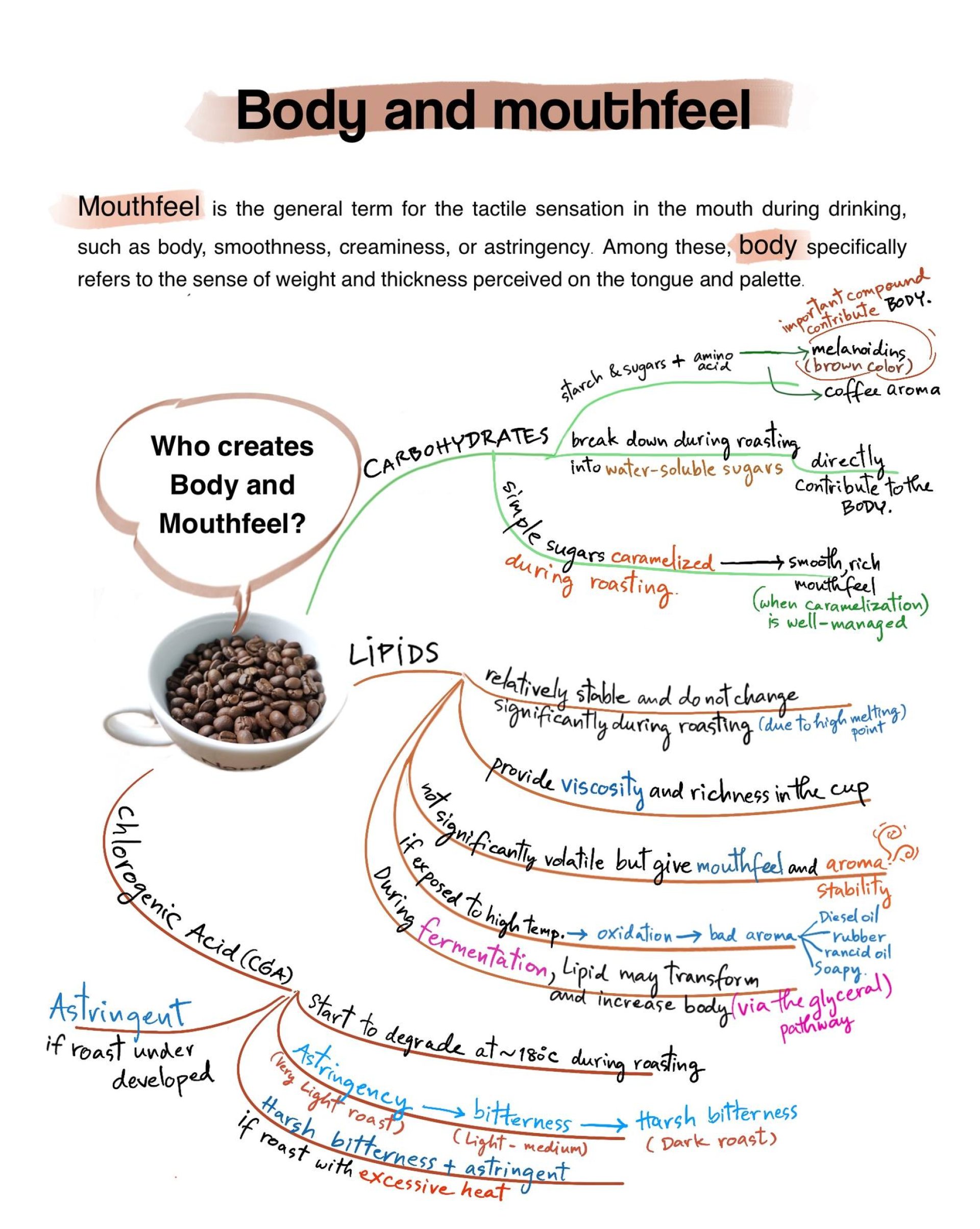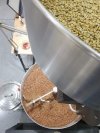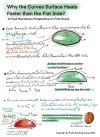Roasting Coffee: Why Body Matters
Last updated: 21 Oct 2025
228 Views

Roasting Coffee: Why Body Matters
At Preeda Roasterys roasting class, students get to taste both their own roasts and their classmates.The city roast level (light-medium) often provides the best learning experience especially when it comes to sweetness and body.
In the first batch, students tend to focus on acidity, hoping to achieve a bright and lively cup.
So, they often stop roasting just after the first crack.
When cupping, the result is usually sharp acidity but also astringent, grassy, lacking sweetness, and missing body.
A roast that ends too early often gives a bright, short-lived acidity.
The first sip may seem exciting, but without sweetness and body to support it, the coffee feels hollow and unbalanced making it hard to enjoy the whole cup.
If a roaster understands how sugars, carbohydrates, fats, and acids develop during roasting and how they influence body and mouthfeel, they might roast a little more patiently giving time for sweetness, body, and mouthfeel to fully develop and balance with the acidity.
Mouthfeel vs. Body Whats the Difference?
Mouthfeel describes the tactile sensations you experience on your tongue while drinking coffee such as smooth, rough, dry, astringent, creamy, or velvety.
Body, on the other hand, refers to the perceived weight or viscosity of the coffee in your mouth.
Simply put:
Body is a subset of mouthfeel.
A coffee might have a heavy, full body but if it also leaves your tongue feeling dry and puckered, that means the mouthfeel isnt pleasant, as its dominated by astringency or dry mouthfeel.
These qualities are often influenced by the roasting process itself, as several chemical compounds develop (or degrade) depending on the roast profile.
Key Components that Shape Body and Mouthfeel
1. Carbohydrates The Source of Roundness and Weight
Carbohydrates in coffee, especially starches and sugars, break down under heat during roasting.
They transform into water-soluble sugars, directly contributing to a fuller body.
With the right roast profile, basic sugars like sucrose undergo gentle caramelization, creating caramel-like sweetness, smooth body, and a pleasant, rounded mouthfeel.
When this stage is well controlled, both flavor and tactile sensations become more defined and harmonious.
2. Lipids The Oil, Richness, and Texture in the Cup
Lipids (coffee oils) have a high boiling point, so they dont evaporate easily but theyre crucial for giving coffee a viscous, silky texture and rich mouthfeel.
In some cases, especially during fermentation, lipids can change through the glycerol pathway, leading to even denser body.
However, overheating can oxidize these oils, producing burnt or rancid notes that ruin the drinking experience.
3. Chlorogenic Acids The Source of Bitterness and Astringency
Chlorogenic Acid (CGA) is a natural organic acid abundant in coffee and highly sensitive to roast level.
If coffee is underdeveloped (too light), CGA doesnt fully break down and converts into caffeic and quinic acids, which taste astringent and harsh common in overly light roasts.
With a well-developed roast, these harsh acids decompose further, leaving a smoother bitterness and pleasant balance that most drinkers prefer.
But with very dark roasts, CGA degradation can go too far, creating bitter, dry, burnt flavors.
Without caramelized sweetness to support it, the result can be unpleasant explaining why many dark roasts are paired with sugar or milk to soften the taste.
How to Achieve a Light Roast with Good Body (Without Bitterness)
I often tell my students during cupping sessions in the Roastmaster Class:
Sweetness, body, and mouthfeel need time to develop.
Dont expect them to appear as quickly as acidity they come from different compounds with slower reactions.
Allowing enough development time also helps reduce astringency from CGA.
Be cautious with excessive heat instead of bringing out smooth sweetness, you may end up with harsh bitterness.
Dont be afraid that longer development will kill acidity.
You still have a window to find the right moment where sweetness and acidity meet in balance resulting in a more complete and enjoyable cup.
If you can do that, I guarantee your customers will happily finish every cup of your coffee.
Thank you.
Related Content
One common challenge many specialty-coffee roasters encounter when roasting dry-process coffee is the appearance of overly strong fermented aromasoften leaning toward ripe or overly alcoholic fruit.
The other day, I was talking with a younger friend about the physical mechanisms behind the First Crack—where it comes from and how it happens. Since she used to work in the aviation field, I brought up an analogy about airflow hitting coffee beans, causing changes in air pressure and velocity—much like how airflow interacts with an airplane wing. After explaining, I realized it might be useful to write it down in a way that paints a clearer picture.
มีคำถามมาว่าจะคั่วโรบัสต้ายังไงให้อร่อย? เพราะหลายคนพยายามคั่วโรบัสต้าให้ฟรุ้งฟริ้งยังไงก็ไม่สำเร็จ กลับจะไปทาง earthy ไม่ค่อยมีรสมีชาติ
บางคนบ่นว่ากลิ่นสาบแรงไปเลยก็มี


